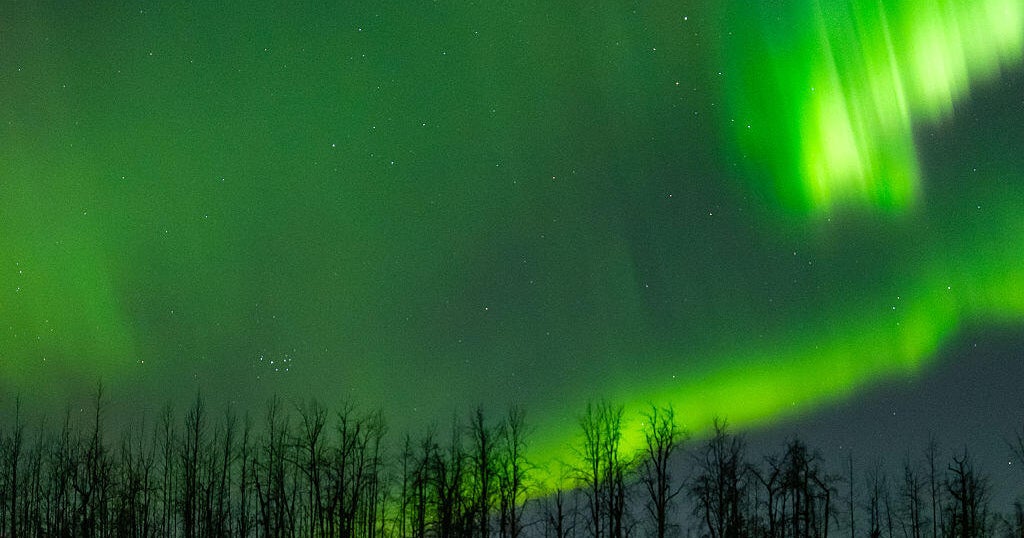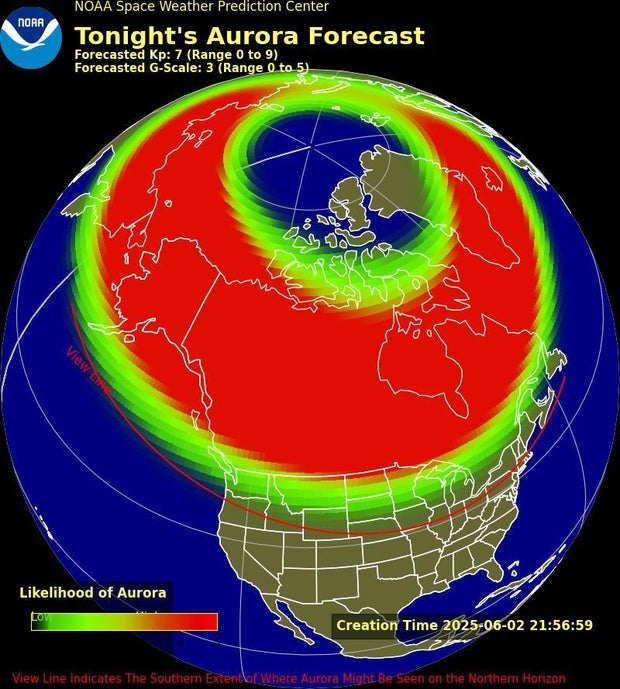
The northern lights may be visible in parts of the U.S. tonight following weekend solar storms, forecasters said.
The sun burped out a huge burst of energy called a coronal mass ejection last week, prompting space weather forecasters to issue a rare, severe solar storm alert on Sunday. Another one headed toward Earth on Monday could produce more aurora sightings.
The northern lights could be visible in Alaska, Washington, Montana, North Dakota, Minnesota, Michigan, Maine, northern parts of Idaho, Wyoming, Iowa, New York, Pennsylvania, Vermont and New Hampshire.
What are the northern lights?
The sun is at the maximum phase of its 11-year activity cycle, making the light displays more common and widespread. Colorful northern lights have decorated night skies in unexpected places, and space weather experts say there are more auroras still to come.
Last spring, the strongest geomagnetic storm in two decades slammed Earth, producing light displays across the Northern Hemisphere. And last fall, a powerful solar storm dazzled skygazers far from the Arctic Circle when dancing lights appeared in unexpected places, including New England and New York City.
Auroras, displays known as the northern and southern lights, are commonly visible near the poles, where charged particles from the sun interact with Earth’s atmosphere.
Every 11 years, its poles swap places, causing magnetic twists and tangles along the way.
Severe storms are capable of scrambling radio and GPS communications.
The sun’s active spurt is expected to last at least through the end of this year, though when solar activity will peak won’t be known until months after the fact, according to NASA and NOAA.
How to see auroras
Northern lights forecasts can be found on NOAA’s Space Weather Prediction Center website or an aurora forecasting app.
Consider aurora-watching in a quiet, dark area away from city lights. Experts recommend skygazing from a local or national park. And check the weather forecast because clouds can cover up the spectacle entirely.
Taking a picture with a smartphone camera may also reveal hints of the aurora that aren’t visible to the naked eye.
Source link





